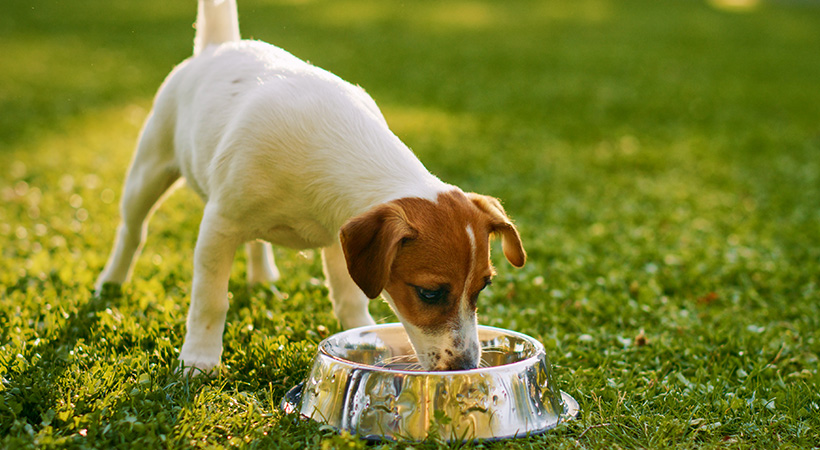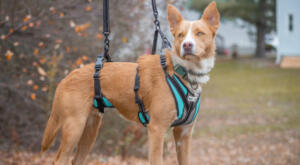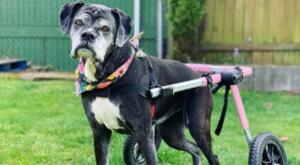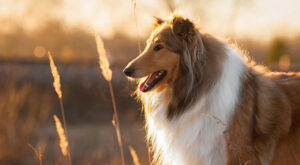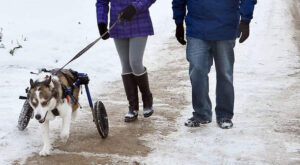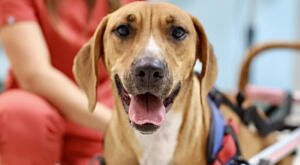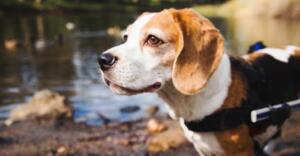Pet parents treat their fur babies like one of their children, so seeing your pets struggle to get around can be challenging. Some pets have trouble getting essential nutrition like food and water because of weak legs or a chronic illness.
As an owner, you can make life easier for them. Use these five suggestions to help your pet access their water bowls.
1. Ensure Accessible Locations
The first step is to ensure the water bowls are in accessible locations throughout the house. Your pets may struggle to descend or ascend stairs, so keep the water on the same level they hang out on during the day.
Pets with disabilities may stay in bed most of the day, so put their water bowl near their resting spots to shorten their trips. It may be wise to put the bowl in a location with reduced foot traffic to reduce their anxiety while drinking water.
2. Use Elevated Water Bowls
As pets age, they’ll likely outgrow the bowls you gave them when they were younger. Cats and dogs typically have to bend their neck to drink water from their bowl, straining their neck and risking choking.
Instead, use elevated water bowls. These dishes are ideal for pets — particularly large dogs — who can’t quickly lower their head to access the water. They’ll also improve swallowing by creating a more natural path for the water to enter their bodies. Pet owners will rejoice when their furry friends don’t choke on the water or cause a mess by regurgitating the liquids.
3. Add More Bowls
Some animals have a routine of sleeping in different spots throughout the day. For example, their morning spot could be the bedroom window before moving to the living room in the afternoon. By nighttime, their favorite place to sleep could be next to your bed for comfort.
Help your pets by placing multiple water bowls around the house. Put at least one near each of their favorite spots to provide easy access. This method reduces the strain of moving to a farther room for hydration.
4. Place Non-Slip Mats
Pets can get messy while drinking water. Some dogs aggressively pull water from their bowls with their tongues, leaving puddles of liquid around the floor. These wet spots can become a liability for your pets if they have mobility difficulties.
Mitigate this problem by adding non-slip mats around each of the bowls. These provide traction underneath your dog’s feet, and reduce the risk of slipping on tile or other surfaces. Rubber mats are ideal, and you can use rugs or towels to absorb the dropped water.
5. Give Them a Water Fountain
Pets are picky about their water — they know when it’s been sitting out too long and isn’t fresh. Your pets may be asleep when you refill their water, meaning they won’t get their favorite fresh taste. Be mindful that standing water is likelier to contain harmful bacteria like giardia or leptospirosis, leading to illness for your pet.
One solution is to get a water fountain appropriate for the animal’s height. These machines run water through a filter, giving your pets the freshness they deserve. The filters require occasional cleaning but promote your pets’ hydration even when you’re not home.
Why Pets Need Easier Access to Drinking Water
Pets are like humans because they can contract diseases and develop disabilities as they age. These conditions can weaken your dog’s legs and cause other mobility issues. Pets with disabilities have difficulty moving around and may endure pain to eat or drink water.
Experts recommend dogs drink about one ounce of water per pound daily. For example, a 20-lb beagle should consume about 2.5 cups of water daily to stay adequately hydrated. However, these reasons may prevent dogs from getting adequate drinking water:
- Disease: Some dogs have illnesses that require them to drink more water than typical pets their age. For example, your dog may have Cushing’s disease — a syndrome that produces too much cortisol in their body. They may drink more water to compensate for their increased thirst.
- Movement issues: Over time, dogs can develop physical disabilities, making moving harder. For example, your canine may have dysplasia — a genetic disorder where two joints don’t connect as they should. The inflammation and pain make walking an inhibition.
- Age: Mobility issues for dogs could derive from their age. As they age, dogs reduce their daily physical activity and lose muscle mass. It’s typical for pets to have stiffer joints as their cartilage weakens over the years.
How to Improve Your Pets’ Drinking Water
Physical limitations may limit how many trips your dog takes to the water bowl daily. When they take a sip, ensure the water quality is up to par with the following tips:
- Change the water: Animals are more intelligent than many think and know when their water isn’t fresh. If you don’t have a fountain, change their water bowls every few hours because microorganisms can grow without you or the dog seeing them.
- Clean the bowl: Swapping the water is good practice, but you should also clean the bowl often. Think about the tiny specs of dirt your pet may accidentally drop into the bowl, contaminating the water.
- Flavor the water: Picky pets might not enjoy regular water. Instead, infuse tiny drops of their favorite liquids, such as bone broth.
Helping Your Pets Use the Bathroom
Pets needing assistance with drinking water may also require help using the bathroom. Try putting your dogs on a regular bathroom schedule to train their bladders. You may need a harness or sling to aid bathroom trips outside.
If you’re away, your dog may be confused with the bathroom schedule and resort to going inside. Set pee pads around their most frequent spots to help them and the furniture. Smaller dogs with limited mobility may benefit from using a litter box.
Providing Easier Access to Essential Water
Pets can be excellent companions during your times of crisis — it’s only fitting to return the favor. Dogs with mobility issues may struggle to get water, so make their bowls more accessible throughout the house. Find the tools best for your furry friends to make their life easier.
Guest Author:
Jack Shaw
Jack Shaw is a passionate freelance writer with a focus on promoting health and well-being. With a deep love for animals, he strives to bridge the gap between human wellness and animal care. His articles aim to inspire readers and their pets to lead healthier lives while fostering a compassionate connection with the world around them.
Related Articles:

